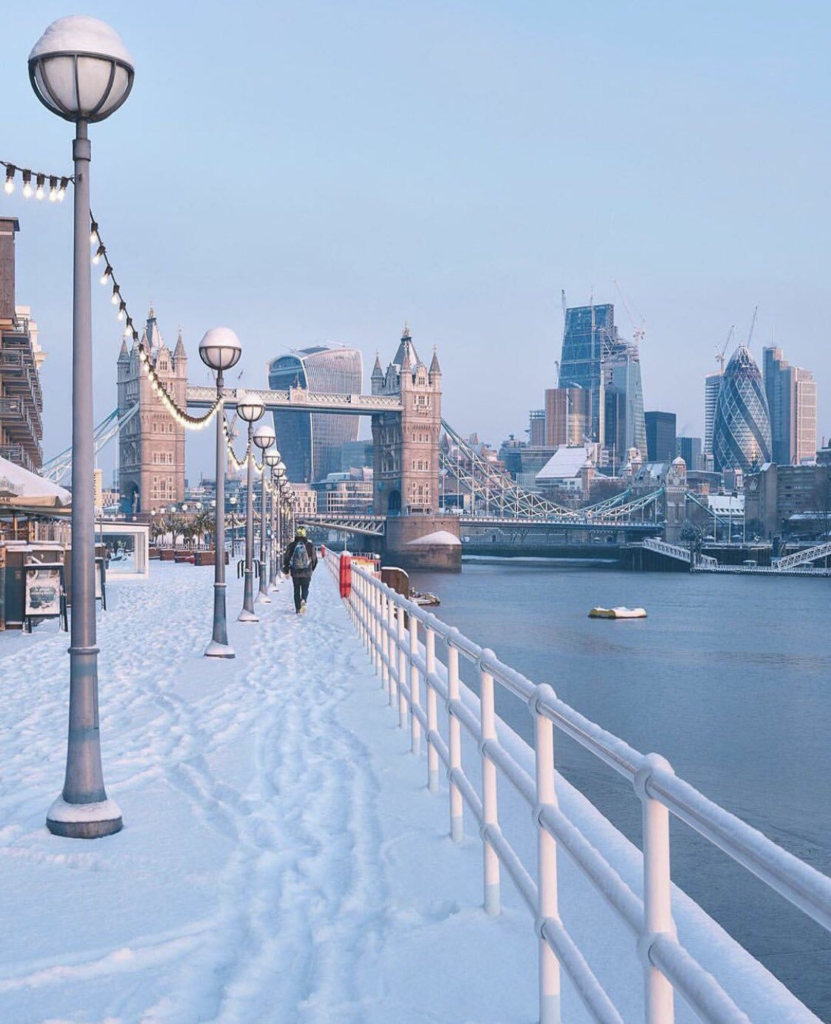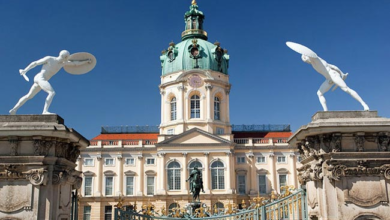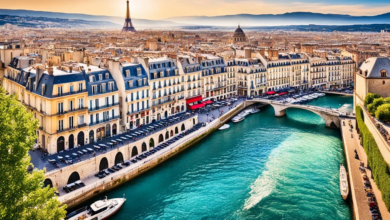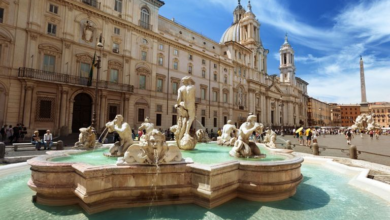Exploring London: Travel Tips and a Traveler’s Guide
Introduction
London, the bustling capital of the United Kingdom, is a city steeped in history, culture, and modern vibrancy. With its iconic landmarks, world-class museums, diverse neighborhoods, and rich culinary scene, London offers something for every traveler. This guide provides essential travel tips and highlights the must-see attractions to help you make the most of your visit to this magnificent city.
Getting to and Around London
By Air
London is served by six major airports:
- Heathrow Airport (LHR): The largest and busiest, located west of the city.
- Gatwick Airport (LGW): South of London, another major international hub.
- Stansted Airport (STN): North-east, popular with budget airlines.
- Luton Airport (LTN): North of London, also serving budget carriers.
- London City Airport (LCY): Closest to the city center, mainly for business travelers.
- Southend Airport (SEN): Further out, less commonly used.
From these airports, you can reach central London by train, coach, taxi, or rideshare services.
By Train
London’s major train stations include:
- King’s Cross/St Pancras: For services to the North and Eurostar connections.
- Paddington: For services to the West, including Heathrow Express.
- Victoria: For services to the South, including Gatwick Express.
- Liverpool Street: For services to the East and Stansted Express.
- Euston: For services to the Midlands and Scotland.
Public Transport
London’s public transport system is extensive and efficient, including:
- London Underground (Tube): The fastest way to get around the city.
- Buses: Extensive network covering all parts of London.
- Trams: Operate in the south of London.
- River Boats: A scenic way to travel along the Thames.
- Bikes: Santander Cycles (Boris Bikes) are available for rent throughout the city.
Contactless and Oyster Cards
Use a Contactless payment card or Oyster card for easy and cost-effective travel on public transport. Both options provide access to the Tube, buses, trams, and river services.
Essential Travel Tips
Best Time to Visit
- Spring (March to May): Mild weather and blooming parks.
- Summer (June to August): Warmest time; ideal for outdoor activities but also the busiest.
- Autumn (September to November): Cool weather and fewer crowds.
- Winter (December to February): Cold but festive with Christmas markets and decorations.
Accommodation
- Luxury: The Savoy, The Ritz, Claridge’s.
- Mid-Range: Premier Inn, The Hoxton, citizenM.
- Budget: YHA London Central, Generator Hostel, Travelodge.
Safety Tips
- Stay Alert: Keep an eye on your belongings, especially in crowded areas.
- Emergency Number: Dial 999 for emergency services.
- Transport Safety: Use licensed taxis or rideshare services.
Currency and Payments
- Currency: British Pound Sterling (GBP).
- Payments: Credit/debit cards widely accepted; contactless payments are common.
Language
- Language: English; however, London is incredibly multicultural, and many languages are spoken.
Must-See Attractions
Historic Landmarks
- The Tower of London
- Overview: Historic castle and former royal residence, home to the Crown Jewels.
- Highlights: Beefeater tours, Crown Jewels, and the medieval White Tower.
- Buckingham Palace
- Overview: The official residence of the British monarch.
- Highlights: Changing of the Guard, State Rooms (open in summer), and the Royal Mews.
- Westminster Abbey
- Overview: Iconic Gothic church and site of royal coronations and weddings.
- Highlights: Poet’s Corner, royal tombs, and the Coronation Chair.
Cultural Sites
- The British Museum
- Overview: World-famous museum housing a vast collection of art and artifacts.
- Highlights: The Rosetta Stone, Egyptian mummies, and the Elgin Marbles.
- Admission: Free (some special exhibitions may charge).
- The National Gallery
- Overview: Home to over 2,300 paintings from the 13th to 19th centuries.
- Highlights: Works by Van Gogh, Da Vinci, and Turner.
- Admission: Free.
- The Tate Modern
- Overview: Contemporary art museum located in a former power

London is a vibrant city with diverse neighborhoods offering unique cultural experiences. Here are some of the best neighborhoods to explore for a local cultural experience:
- Shoreditch: Located in East London, Shoreditch is known for its vibrant street art, trendy bars, independent boutiques, and a thriving creative scene. It’s a great place to explore contemporary art galleries, vintage markets, and enjoy the area’s lively nightlife.
- Camden Town: Camden Town in North London is famous for its alternative and eclectic atmosphere. It’s home to the iconic Camden Market, where you can find a variety of stalls selling fashion, accessories, crafts, and street food. The neighborhood also hosts live music venues, including the legendary Roundhouse.
- Notting Hill: Known for its picturesque streets and colorful houses, Notting Hill offers a mix of bohemian charm and upscale boutiques. Portobello Road Market is a must-visit, especially on Saturdays when it’s bustling with antiques, vintage clothing, and food stalls. Notting Hill is also famous for the annual Notting Hill Carnival, celebrating Caribbean culture and music.
- Brixton: Located in South London, Brixton has a vibrant multicultural atmosphere. It’s known for its lively street markets, such as Brixton Market and Electric Avenue, offering diverse culinary delights and fresh produce. Brixton also has a rich music heritage, with venues like the O2 Brixton Academy hosting a range of concerts and events.
- Southbank: Situated along the southern bank of the River Thames, Southbank is a cultural hub with numerous attractions. It’s home to world-renowned venues like the Southbank Centre, hosting music, theater, and art performances. You can visit the Tate Modern art gallery, enjoy a walk along the Thames, and explore the vibrant food markets and street performers in the area.
- Brick Lane: Located in East London, Brick Lane is known for its vibrant multicultural atmosphere and renowned curry houses. It’s a great place to explore street art, vintage shops, and sample delicious cuisine from various cultures, including Indian, Bangladeshi, and Middle Eastern.
These neighborhoods offer distinct cultural experiences, reflecting the diversity and creativity that London has to offer. Each area has its own unique charm, so be sure to explore and immerse yourself in the local atmosphere to truly appreciate the city’s cultural richness.

These neighborhoods in London are well-served by public transportation, making them easily accessible for exploration. Here’s a general overview of the transportation options and the best ways to explore each neighborhood:
- Shoreditch: Shoreditch is well-connected by public transportation. The nearest Underground stations are Liverpool Street, Old Street, and Shoreditch High Street. You can also use Overground services to Shoreditch High Street or Hoxton stations. To explore the area, walking is the best way to soak in the vibrant atmosphere and discover street art, shops, and cafes.
- Camden Town: Camden Town has excellent transport links. The nearest Underground station is Camden Town, served by the Northern Line. You can also reach the neighborhood via Overground services to Camden Road or Kentish Town West stations. Once there, exploring on foot is ideal, as you can navigate through Camden Market and enjoy the local scene.
- Notting Hill: Notting Hill is conveniently accessible by public transport. The nearest Underground stations are Notting Hill Gate and Ladbroke Grove, served by the Central, Circle, and District lines. From there, you can explore the neighborhood’s charming streets, visit Portobello Road Market, and wander through the area on foot.
- Brixton: Brixton is well-served by public transportation. The nearest Underground station is Brixton, served by the Victoria Line. You can also reach Brixton via Overground services to Brixton station. To explore the neighborhood, walking is a great option, allowing you to visit Brixton Market and experience the local vibe.
- Southbank: Southbank is easily accessible by public transport. The nearest Underground stations are Waterloo, Embankment, and Southwark, served by various lines. You can also reach the area via train to Waterloo station. Walking along the Southbank promenade is an excellent way to explore the area and enjoy the riverside views. You can also rent a bike or take a riverboat cruise for a different perspective.
- Brick Lane: Brick Lane is well-connected by public transportation. The nearest Underground stations are Aldgate East and Liverpool Street. You can also reach the area via Overground services to Shoreditch High Street or Whitechapel stations. Exploring Brick Lane on foot is recommended, as it allows you to fully experience the vibrant street art, markets, and culinary offerings.
In addition to public transportation, London has an extensive bus network that can also be used to reach these neighborhoods. Consider using contactless payment methods or an Oyster card for convenience and cost savings when using public transportation in London.
If you’re interested in experiencing the local food and nightlife scenes in London, the following neighborhoods are known for their diverse culinary offerings and vibrant nightlife:
- Soho: Located in the heart of the West End, Soho is a bustling neighborhood known for its vibrant nightlife and diverse dining options. You’ll find a wide range of international cuisines, from trendy restaurants to street food stalls. Soho is also home to numerous bars, pubs, and clubs, making it a popular destination for a night out.
- Shoreditch: Shoreditch in East London has a thriving food and nightlife scene. It offers a mix of hipster bars, trendy restaurants, and street food markets. Explore the area around Shoreditch High Street and Brick Lane for a wide variety of cuisines, including Indian, Middle Eastern, and fusion. The neighborhood is also known for its lively bars, clubs, and live music venues.
- Camden Town: Camden Town is famous for its alternative vibe and vibrant street markets. It’s an excellent neighborhood to experience a diverse range of street food from around the world. You’ll find everything from falafel wraps to Chinese dumplings and Caribbean jerk chicken. After enjoying the food, you can explore the area’s live music venues and bars, which offer a lively nightlife.
- Brixton: Brixton is a multicultural neighborhood in South London known for its fantastic food scene. Brixton Market and Electric Avenue are popular spots for sampling Caribbean, African, and Latin American cuisines. The area also boasts a vibrant nightlife, with numerous bars, pubs, and live music venues showcasing a mix of genres.
- Covent Garden: Covent Garden is a vibrant area in the West End, known for its bustling markets and entertainment. The neighborhood offers a wide range of dining options, from high-end restaurants to casual eateries. You can find cuisines from around the world, and the area’s pubs and bars offer a lively atmosphere for evening entertainment.
These neighborhoods provide a mix of culinary delights and exciting nightlife options, ensuring a memorable experience for food and entertainment enthusiasts in London.

If you’re looking to experience the most diverse range of international cuisines in London, I would recommend the following neighborhoods:
- Soho: Soho is known for its diverse culinary scene, offering a wide range of international cuisines within a compact area. You’ll find everything from Italian trattorias and French bistros to Asian fusion restaurants and Middle Eastern eateries. Soho is also home to vibrant food markets and street food stalls, making it a great destination for sampling different international flavors.
- Camden Town: Camden Town is renowned for its eclectic and diverse food scene. The neighborhood’s markets, such as Camden Market and Stables Market, are teeming with food stalls representing various cuisines from around the world. You can savor dishes from India, Thailand, Mexico, the Caribbean, and more. Camden Town truly offers a melting pot of international flavors.
- Brixton: Brixton has a rich multicultural heritage, and its food scene reflects that diversity. Brixton Market and Electric Avenue are home to numerous food stalls and restaurants serving cuisine from the Caribbean, Africa, Asia, and beyond. You can indulge in jerk chicken, West African jollof rice, Vietnamese pho, and much more, making it an excellent neighborhood for exploring international flavors.
- Brick Lane: Brick Lane, located in the East End, is renowned for its vibrant food scene, particularly for Indian and Bangladeshi cuisine. The street is lined with curry houses and Indian restaurants offering a wide variety of dishes, from traditional curries to street snacks like samosas and pakoras. Brick Lane also features other international eateries, including Middle Eastern, Vietnamese, and Ethiopian cuisines.
These neighborhoods stand out for their diverse culinary offerings, with a wide range of international cuisines to explore. Whether you’re craving Italian, Asian, African, or other global flavors, these areas will provide you with a rich and diverse dining experience in London.
For the most authentic and traditional international cuisine experiences in London, I would recommend the following neighborhoods:
- Chinatown: Located in the heart of London’s West End, Chinatown offers an authentic taste of Chinese cuisine. The area is filled with Chinese restaurants, bakeries, and grocery stores. You can savor traditional dishes like dim sum, Peking duck, and various regional Chinese specialties. Chinatown is also known for its vibrant atmosphere and cultural events.
- Little Italy (Clerkenwell): Though not as large as other Little Italy neighborhoods around the world, Clerkenwell in East London is home to a tight-knit Italian community and boasts some of the most authentic Italian restaurants in the city. From trattorias serving homemade pasta to pizzerias with wood-fired ovens, you can find traditional Italian dishes and regional specialties in this area.
- Edgware Road: Edgware Road is known as London’s “Little Beirut” due to its vibrant Middle Eastern community. Here, you’ll find a wealth of authentic Lebanese, Syrian, and other Middle Eastern restaurants, serving dishes like falafel, shawarma, mezze, and delicious pastries. The area is also known for its Middle Eastern supermarkets and bakeries.
- Brick Lane: Brick Lane in East London is famous for its vibrant curry houses and authentic Indian and Bangladeshi cuisine. You can find traditional dishes such as biryani, curry, tandoori, and various street food snacks. Brick Lane offers a taste of the rich culinary heritage of South Asian communities in London.
- Pimlico (Portuguese Quarter): Pimlico is home to a significant Portuguese community, often referred to as the Portuguese Quarter. Here, you can find authentic Portuguese restaurants serving traditional dishes like bacalhau (salted cod), grilled sardines, and pastéis de nata (custard tarts). The area also hosts Portuguese festivals and events, adding to the cultural experience.
These neighborhoods provide a range of authentic and traditional international cuisine experiences, allowing you to immerse yourself in the culinary traditions of different cultures. Whether you’re craving Chinese, Italian, Middle Eastern, Indian, or Portuguese cuisine, these areas will offer you an opportunity to savor the flavors and authenticity of these culinary traditions.



